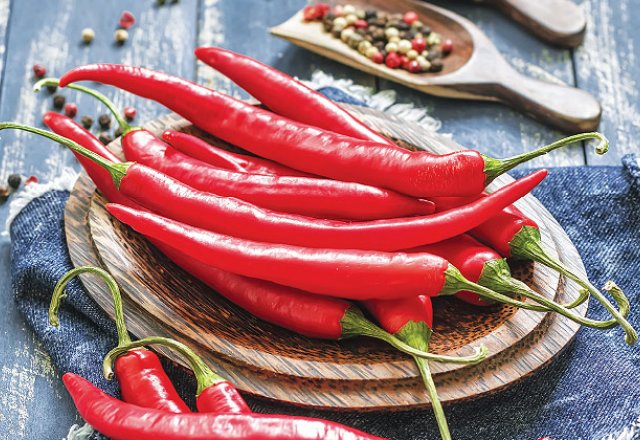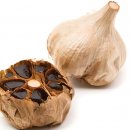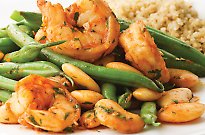
Health benefits of chillies
Health benefits of chillies

Loved or loathed, chillies add much more than spice to hearty winter warmers, or summer-inspired Mexican fare.
Once believed to be native to South America, the chilli plant may have first been cultivated in Mexico some 7,500 years BC according to a new study from researchers at the University of
California. Yet, regardless of its heritage, there’s good reason why it has remained one of the world’s most popular and versatile ingredients.
With more than 200 varieties of chillies known, the fruit – a member of the capsicum and nightshade families – ripen with a variety of textures, colours and flavours, and not all are hot.
Those that do produce more fire on the tongue are high in capsaicin, a compound that concentrates within the seeds, and the adjacent fleshy sac. It’s this substance that acts as a natural deterrent for animals (including some humans).
Warming to wellness
Boasting high amounts of vitamin C and antioxidants, chillies have been found to help prevent lifestyle diseases including some cancers and stomach ulcers. Meanwhile, their ability to create heat within the body has also linked the peppers to weight loss as well as lowering the risk of type II diabetes.
Red varieties, which are typically high in beta-carotene and pro-vitamin A, are said to boost immunity and promote healthy mucus membranes, which may ease congestion of the lungs, nasal passages, urinary and intestinal tracts.
How to eat chillies
From dried and ground to raw and sautéed, there are many ways to enjoy chilli peppers in your next meal.
Sautéed vegetables can benefit from the addition of finely chopped chillies, as can Thai-inspired curries. Alternatively, add a little burn to homemade salad dressing with either freshly picked chillies or the dried variety available from your local supermarket spice aisle.
For those who are more daring, eating hot, pickled chillies straight from the jar will most certainly add some sweat to the brow. However, those who suffer from hemorrhoids should employ caution, as the hotter varieties of chilli may exacerbate the condition.
How to prepare
1. Handling and cooking with fresh chilli peppers should be done so with care as the capsaicin may cause burning to the eyes, skin or lips. Wear rubber gloves and remove immediately after handling chillies, or alternatively, thoroughly wash hands as well as all kitchen utensils used in their preparation.
2. If you love extra spice in your dish, you may choose to leave the chilli seeds and inner white membranes intact as this is where most of the heat comes from.
3. For those who appreciate chilli flavour without the high heat, carefully remove all seeds and the inner white flesh and discard well away from the easy reach of children.
4. Remove the green cap and stem from the chilli before cooking.
Chilli varieties
Get to know your jalapeno from your habanero:
ANAHEIM When ripened red, these sweet and mild chillies are ideal for stuffing. Green when less ripe, add them to your favourite Mexican dish for a more subtle spice.
CHILE DE ARBOL Spice lovers will want this variety on their dinner plate. Hybridised from cayenne, the chile de arbol is also extremely spicy well before it matures.
CHIPOTLE One of the most commonly used chillies, the chipotle is actually a dried and wood-smoked red jalapeno. Embodying a decent heat, most chilli lovers will be satisfied with the chipotle kick.
FIREFLAME A mild flavour, the fireflame can be recognised thanks to its long and tapering pod, and adds a subtle spice to dishes such as chilli con carne.
GUAJILLO A deep red and amber hue, with hints of brown, this chilli is said to hold a flavour reminiscent of green tea mixed with berries. It also forms the basis for many sauces in its native Mexico.
HABANERO If you’re one of the ‘some’ who like it hot, this feisty fruit may be for you. Paired well with tomato-based dishes, the habanero will do more than break a sweat.
JALAPENO Eaten green, the hot jalapeno (pronounced hala-peen-yo) is a smaller chilli, usually shaped like a small triangle. Often pickled, they are ideal on sandwiches as well as in any dish that requires a little extra heat.
PABLANO A common sauce ingredient, the pablano is often stuffed and produces a mild flavour.
Author: Shannon Dunn
NEXT: Spicy eggplant rolls>>















